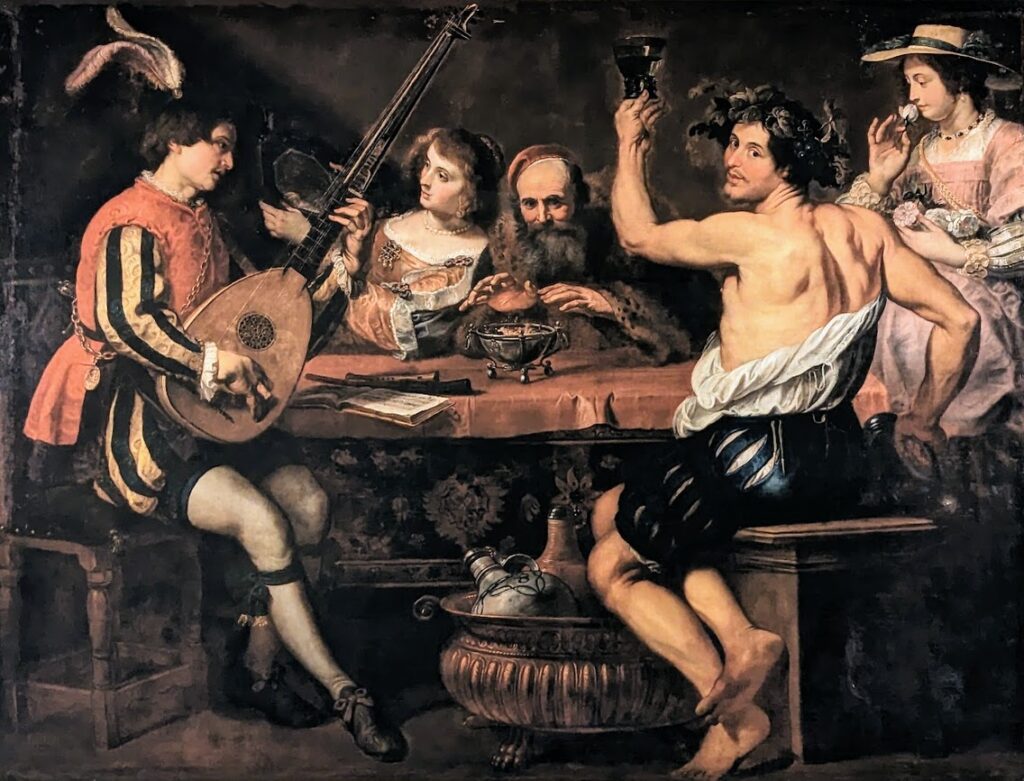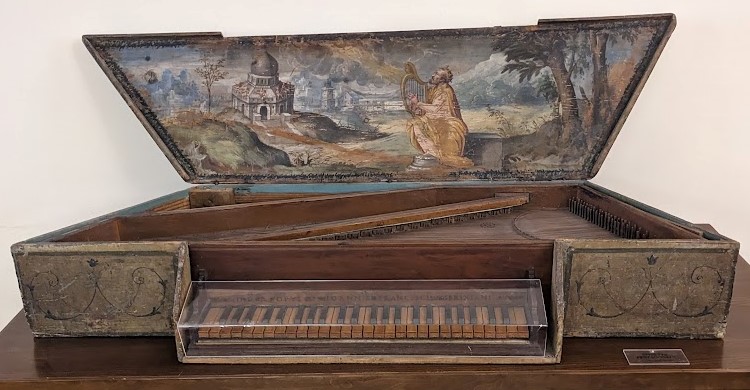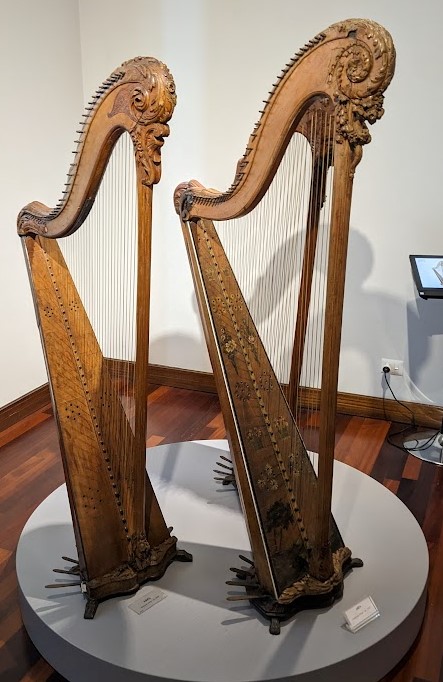
Now we are back in South Australia and in the depths of a damp winter, it is hard to believe that only a few weeks ago we were wandering through Rome, immersed in spring. Early in the tourist season, the crowds were already building around the more famous sites, but we happily meandered through deserted back streets lined with blossom, soaking up the atmosphere, and coming across a few surprising secrets.
One such secret was the National Museum of Musical Instruments. This fabulous museum is not widely advertised, but it does rate a mention in the Lonely Planet Guide to Rome. When we realized it was only a ten minute walk from our B&B, we thought it might be worth a visit. After a coffee in the park, overlooking the old city walls, we went in search of this hidden gem. And hidden it certainly was: tucked behind the Basilica di Santa Croce in Gerusalemme, in what was once the Palazzina Samoggia. The Museum was established in 1974 and filled with the substantial remnants of a private collection belonging to Evangelista Gennaro Gorga, an Italian lyric tenor born in 1865. He gave up a successful career at the age of thirty four, presumably to focus on his collecting habit. Intent on creating an encyclopaedical collection of musical instruments from archaic to the present day, Gorga would collect
more than 150,000 antiques, that included not only musical instruments but toys, pottery, and ancient weapons. Although he came from a wealthy Italian family, he would spend an entire fortune on this vast collection. Eventually, up to his ears in debt, he was forced to sell many pieces during the Depression, and eventually, he gifted the rest – mostly musical instruments – to the government, to allay his debts. These pieces were eventually collected from various storage facilities across Rome and now make up a large portion of the current Museum collection. There are also some wonderful paintings that feature musicians through the ages.

So, what did I learn about the history of musical instruments? Or more to the point, what do I now remember? (If you already know all there is to know on the subject, feel free to skip the rest of the story. For those of you prepared to read on, I will try not to waffle for too long.
The museum holds a fascinating collection of more than 800 rare and ancient instruments from Italy and Europe, from the sacred Egyptian sistrum, used in dances and religious ceremonies (it sounds like one of those wooden rattles used at football matches) to the 19th century zither. The zither probably originated in Persia, and has appeared in many cultures in various forms, particularly in the Far East. The earliest known surviving instrument of the zither family dates from 433 B.C. It is a Chinese guqin, found in the tomb of Marquis Yi of Zeng.
Signposting around the museum explains that bowed string instruments evolved from the hunting bows of central Asia, their popularity spreading westwards, finally arriving in Italy and Spain in the 10th century. By the end of the 15th century, the invention of the arched bridge to support the strings, and a casing made from separate pieces of wood helped to produce a much more sophisticated sound, and eventually led to the invention of the violin. During the 18th and 19th centuries, the violin would evolve further, as orchestras playing in large concert halls required a bigger sound.
Percussion instruments were first used in Persia and Turkey. As the instruments of the Muslim Menace, they were banned in Europe for centuries. Then, when finally deemed acceptable, these instruments (drums, cymbals, tambourines) were used by military bands. By the end of the eighteenth century, they had also begun to appear in western orchestral music.
Instruments can be divided into three categories based on how they produce sounds: string, wind, and percussion. The piano is a string instrument (think of all those vibrating wires under the lid) and it’s ancestry can be traced back to the clavichord, harpsichord, spinet, virginal and dulcimer. Aren’t they lovely, musical words? The museum has a beautiful assortment of early pianos in many different shapes and sizes, as their creators experimented with shape and sound and volume.

The dulcimer dates back to circa 500BCE, and was used in the Middle East, Southwest Asia, and China. It reached Europe in the 11th century. A simple resonating box with strings stretched on top of it, there is a small hammer to hit the strings, just like the piano. Then, around 1500, the harpsichord was created in Italy. and would travel north to France, Germany, and Great Britain. Its system of strings and soundboard, and the overall structure of the instrument resemble those that can be found in a modern piano.
The piano is also part of the keyboard family. Keyboards originated in Ancient Greece, where the organ was invented, sending bursts of air through hollow pipes to make sound. Fourteenth century craftsmen improved upon the organ to develop the clavichord.
The first piano was invented by an Italian, Bartolomeo Cristofori (1655-1731) in Florence, for the Medici Family, who were great patrons of the arts and music. Cristofori, unhappy with the lack of control over the volume level of the harpsichord, swapped the plucking mechanism with a hammer to create the piano as we know it today. Originally, it was known as the “clavicembalo col piano e forte“. Literally, this means a harpsichord that can play soft and loud noises. A complicated name even for Italians to say, it was soon shortened ‘piano.’ The museum owns one such piano. Built by Cristofori in 1722, it is one of only three to survive, and apparently the best preserved of the three.
We also came across the oldest German harpsichord in the world, and the famous ‘Harp Barberini.’ What was especially nice at the museum, was that audio-visual displays allowed you to listen to the sound these instruments would make when played. Many of these instruments have been beautifully decorated and painted, and would look equally splendid in an art gallery. Next time, we will try and time our visit for one of the musical reviews or concerts that take place at the museum.
*Photos care of the One & Only

